The second half of the falsehood on which all members of Magnum, past and present, have signed off over the decades concerns the fable of the melting of the emulsion of Capa’s Omaha Beach negatives in LIFE‘s London darkroom on the night of June 7, 1944. (Click here for my discussion of the first half of that lie, and Magnum’s accountability for it.)
The disclosure by this blog of the obvious fact that film emulsion doesn’t melt as a result of brief exposure to heat may have come as news to John Morris last year. But Robert Capa knew that; his apprenticeship as a photographer in Berlin in the early ’30s had started with him doing darkroom work for Simon Guttmann’s picture agency, Dephot. Cornell Capa knew it too; he had done his own apprenticeship in Paris developing film for his brother, David Seymour, Henri Cartier-Bresson, and others, and had subsequently become a darkroom tech for LIFE in New York before turning photojournalist himself.
 No experienced photographer or darkroom worker would believe such a story, or make it up. It’s exactly the kind of implausible excuse that someone with no hands-on experience with the craft of photography and entirely ignorant of standard darkroom procedures — someone like, say, John Morris — would concoct in a moment of desperation to cover something up.
No experienced photographer or darkroom worker would believe such a story, or make it up. It’s exactly the kind of implausible excuse that someone with no hands-on experience with the craft of photography and entirely ignorant of standard darkroom procedures — someone like, say, John Morris — would concoct in a moment of desperation to cover something up.
Indeed, from the agency’s inception in 1947 through today, every Magnum photographer has known that the doors of that drying cabinet in London were not “normally kept open” when it contained wet film, just as they’ve known that the emulsion on Capa’s 35mm Super-XX film did not get destroyed after “just a few minutes” in a closed drying cabinet with a small heating coil on its floor. They simply haven’t had the professional integrity to say so.
And of course they’ve profited by their silence on this score. Not only does the Capa D-Day myth feed the Magnum brand, but its underlying theme — corporate mishandling of a photographer’s important work and covering up of that accident — adds urgency to the agency’s premise: that independent, freelance photographers need to band together to protect themselves from editors and publishers who may play fast and loose with their hard-won imagery. (I don’t disagree at all with that premise, let me add; but the evidence indicates that this instance doesn’t exemplify that problem.)
Moreover, Magnum has actively promulgated both the tall tale Capa devised about his 90 minutes on Omaha Beach and the fable Morris cooked up of the melted emulsions. Indeed, Magnum actually used an extract from Capa’s fictionalized memoir as caption material for press prints the agency sent out of his Omaha Beach images. Consider, for example, this detail from a press print of Capa’s most famous D-Day image, “The Face in the Surf”:
Its verso bears the Magnum stamp, showing that Magnum distributed it for reproduction. As the note at the top of the lengthy typed caption attached to the center of the verso indicates, the agency copied this text from the posthumous monograph Robert Capa: Images of War, issued by Grossman Publishers in 1964. The annotation at the top left of the back of this print — “Images of War – The Invasion” confirms that, referring to the chapter by that title in Images of War, for whose publicizing this print most likely served. That text in Images of War consists entirely of extracts from Capa’s heavily fictionalized 1947 memoir, Slightly Out of Focus — ending with the fable of the darkroom accident and the melted emulsion. Here, then, we have Magnum officially putting its imprimatur on that story and distributing it for publication.
(Ph.D. student Andrea Gustavson discovered this print in the Magnum Archives in 2012 while working as a Public Services Intern at the Harry Ransom Center at the University of Texas, Austin. See her August 24, 2012 commentary, “Stories from Summer Vacation: Andrea Gustavson in the Archive.” I note with interest that, in her discussion of it, she writes, “[T]his iconic photograph taken by Robert Capa is one of several photographs taken during the second wave of American troops to invade Omaha beach [sic] on D-Day June 6th, 1944.” Italics mine.)
Aside from the annotations relating to the Grossman monograph, there’s no specific date attached to this press print. The pencilled note on the lower right of the verso indicating that it appeared on page 73 of some issue of Popular Photography — which Gustavson didn’t manage to trace, and I haven’t either — might help pin down the date of this print. However, the several references to Images of War strongly suggest the middle 1960s as the timeframe.
Furthermore, this taped-on excerpt from Capa’s book is clearly either a typed carbon copy or a typed and mimeographed copy of the selected passages — definitely not anything photocopied from any book. This leads me to believe that the typed excerpt and the print that bears it both date from the mid-1960s, some years before photocopy machines became standard equipment in small, low-budget offices like the agency’s. If so, Magnum’s public commitment to spreading the legend goes back at least half a century.
And it continues to the present day, as evidenced by this grammatically and orthographically challenged, factually inaccurate claim from the agency’s current Capa D-Day page: “As the only photographer in the first wave of the Normandy beach landings by Allied troops, Capa’s pictures are the only documents that capture the horror and heroism of the Allies as they disembarked from landing craft into a hail of bullets and sharpnel [sic].”
•
But Magnum’s participation in falsifying the record on this score doesn’t end there.
As a matter of course and a privilege of membership, all Magnum photographers have had access to the contact sheets of the others, and many of them, according to their own testimonies, have pored over the contact sheets of their colleagues and predecessors, using them as the basic texts for their education in the medium. (See Russell Miller’s 1999 book, Magnum: Fifty Years at the Front Line of History, among other sources.)
Not only that, but the early members — the founders and those of Capa’s peers and colleagues that he brought into the agency — themselves used Leicas and Contax IIs. So, experientially, they knew of the minor design problem that resulted in the image area of 35mm film overlapping the lower sprocket holes in the exposures, as demonstrated here by photographer and photo-historian Rob McElroy.
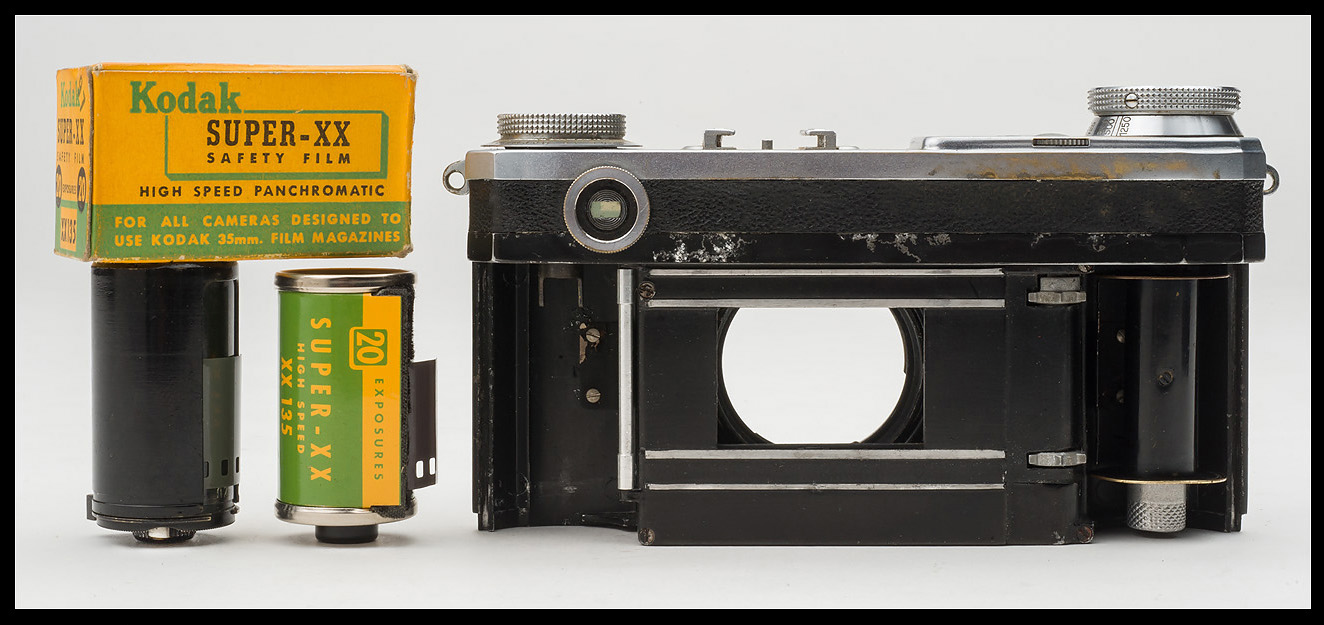
A Zeiss Ikon reloadable film cassette and a roll of Kodak Super-XX 35mm film sit next to a Contax II camera, the model used by Robert Capa on D-Day. (Note difference in height of cassettes.) Photo © 2015 by Rob McElroy.
Those who came after them, using different cameras or models whose designers had resolved that mechanical problem, knew from studying their forebears’ contact sheets that those same intrusive sprocket holes appeared on countless contact sheets by other photographers. So everyone at Magnum has known that the story of sliding emulsion on Capa’s D-Day exposures premiered in 2007 by authorized Capa biographer Richard Whelan and furthered by ICP’s Cynthia Young constitutes a fiction. Yet they have kept silent about that as well, lying by omission. It is, after all, a profitable silence.
Sins of Commission
Magnum’s energetic promulgation of the Capa D-Day myth did not begin and end with distribution of the original fable as captioning information for the Omaha Beach pictures. To the contrary: It continues through the present, and in recent years it has accelerated.
Take the 2011 monograph and accompanying 2012 traveling ICP exhibition Magnum Contact Sheets, the book edited by and show curated by Kristen Lubben, who was then at the International Center of Photography — and now sits as Executive Director of the Magnum Foundation. (The Capa Consortium is a very small world.) With its shipping weight of 10 lbs., this book, published by Thames & Hudson, is big enough to squash a cat if dropped from waist height. It begins with a selection of the four founders’ pre-Magnum contact sheets, Capa’s Omaha Beach images among them. The “digitally reconstructed” contact sheet of that short sequence comes accompanied by a brief essay from Cynthia Young, whose bio note at the back of the book indicates that as of that date she “manage[d] the Robert Capa and Cornell Capa Archive” at ICP. (She subsequently became its official curator.)
This short chapter, which appears on page 50, packs a remarkable amount of misinformation and outright untruth into its 640 words:
• “The invasion on Omaha beach [sic] was chaotic, and Capa nearly lost his life. Rough seas swamped all but a few of the amphibious tanks that were to back up the infantry, and many of the boats were driven off target by the wind and current, separating men from the officers with whom they had expected to rendezvous. The beach rockets [sic] intended to stun the Germans arrived too early …” (Aside from his presence there, we have no evidence that “Capa nearly lost his life.” Indeed, he arrived fortuitously at a seam in the German defenses, where enemy fire was comparatively sporadic and light. Furthermore, the “men” did not travel separately from their “officers.” To the contrary, numerous eyewitness accounts of the early hours of the invasion note that the officers, who frequently took the lead in disembarking, were in many cases among the first troops killed or wounded. I have no idea what she means by “beach rockets.”)
• “Capa photographed on the beach for about an hour and a half, shooting four rolls of 35mm film. He then boarded a ship to take him off the beach, but this was subsequently hit and sank and he eventually made it back on another boat, where medics were treating the wounded. He arrived in Weymouth on the morning of 7 June, handed his film to the Army courier, and returned to France.” (Much of this is false. Capa stayed on the beach for less than 30 minutes, exposing only the lone roll containing the ten images that we have. He left Omaha Beach aboard LCI(L)-94, according to three crew-member eyewitnesses. LCI(L)-94 was indeed hit, but did not sink; to the contrary, according to U.S. Coast Guard records, “she remained in the Normandy area until October 5, 1944, directing trans-channel traffic or escorting landing craft.” Decommissioned on April 19, 1946, LCI(l)-94 was transferred to the Maritime Commission on November 13, 1947 for disposal.
According to the U.S. Naval Institute, a boat, generally speaking, is small enough to be carried aboard a larger vessel, and a vessel large enough to carry a smaller one is a ship — so Capa left the beach on a boat, and returned to England aboard a ship.)
• Young then repeats the fable of the overheated drying cabinet with closed doors, the emulsion melting, the melted film sliding over the sprocket holes. This includes the passages she plagiarized from Whelan’s 2007 exhibition catalogue This Is War! Robert Capa at Work. (All this is demonstrably false. As a matter of fact, the book reproduces not only Capa’s Omaha Beach contact sheet but two other Capa contact sheets: “The Battle of Rio Segre, 1938” (p. 28) and “Leipzig, 1945” (p. 56). Both show the same sprocket-hole effect, as do George Rodger’s 1940 London blitz contact sheet (p. 41), Elliott Erwitt’s 1953 “Mother and Child” contact sheet (p. 71), and Marc Riboud’s 1953 “Eiffel Tower Painter” contact sheet (p. 74) — all giving the lie to Young’s specious claim right in this very volume. Truly brazen.)
• In her concluding paragraph, Young asserts, “When the pictures were published in Life on 19 June 1944, they changed the course of public sentiment for American involvement.” (This is false; national support for U.S. participation in the war was at its height in the spring of 1944, and Capa’s images had no noticeable effect on that patriotic fervor, unless it was to heighten it. Certainly they did not “change the course of public sentiment” in any way.)
• The caption on page 50 for the reproduced contact sheet on page 51 reads: “Life magazine of June 19, 1944 reproduced a total of 10 of the 11 salvageable frames from Capa’s original 108.” (This is false. Aside from the fact that we have no evidence supporting the existence of an 11th frame in this sequence, Life‘s June 19 feature on D-Day, “Beachheads of Normandy,” reproduced only 5 of Capa’s 10 Omaha Beach images, the other 5 being repetitive and/or mediocre. Furthermore, if Capa had exposed four rolls of film there, as Young claims, the result would have been 144 original negatives, not 108.)
Clearly, Young decided to improve on the already ornate legend by embellishing it further — and felt entitled to do so. By the same token, Lubben felt empowered to approve all that. Membership in the Capa Consortium has its privileges.
Finally, the picture agency’s multimedia division, Magnum in Motion, produced for Time, Inc. the 2014 video celebrating the 70th anniversary of Capa’s brief moment on Omaha Beach — a publication (approved by Young at ICP) that, using John Morris as narrator, repeats yet again the specious narrative of the “ruined” four rolls of film, adding to that reiteration of the myth by illustrating Morris’s account with digitally faked examples of the supposedly damaged negatives. (Rob McElroy’s disclosure of that deception at this blog led to the overnight re-editing of the Magnum-produced video.)
From the evidence we can draw a clear conclusion: Partners in this consortium, including Magnum’s members and its administrators, do not scruple to contaminate the record with misinformation, outright lies, falsified “evidence,” and whatever fanciful elaborations they feel like making up concerning Robert Capa’s D-Day experiences and the subsequent fate of his negatives.
Circling the Wagons
No corporation takes kindly to revelations that sully its institutional image, or that of its founders and owners.
Pre-planned or ad hoc, Patrick Zachmann’s childish tantrum at the Athens Photo Festival on June 5, 2015 in response to my presentation there of this investigation’s findings demonstrates that anything less than hagiography gets perceived by Capa’s devotees and beneficiaries at Magnum as blasphemous, evoking immediate outrage and ferocious denial.
From the start, the membership of Magnum has, at the very least, kept its lips sealed as this myth — from which it benefits in many ways — has spread. Not only do all of Magnum’s members stand implicated in this elaborate 70-year cover-up, but so do all of Magnum’s directors, starting of course with Robert Capa himself and his successor John Morris, running right up through Mark Lubell (ex-director of Magnum and now director of ICP) and his replacement at Magnum Photos, the agency’s new CEO, David Kogan, as well as Kristen Lubben, ex-ICP curator and new head honcho of the Magnum Foundation.
They all have investments not only in the Capa D-Day myth but in their collaboration with the other partners who comprise the consortium. The classic question of both Marxism and criminal investigation pertains here: Who profits? The logical answer: Follow the money.
So it seems appropriate to hold all divisions of Magnum Photos — and all the individuals involved in them from 1947 till now — publicly accountable for the many ways, active and passive, in which they have colluded among themselves and with others to perpetuate and amplify the Capa D-Day myth.
I’ll gladly debate this with representatives of Magnum, on the record, in print or pixels (including here at my blog), or in person at a public forum.
•
(For an index of links to all posts in this series, click here.)
•
This post supported by a donation from David Wunsch.



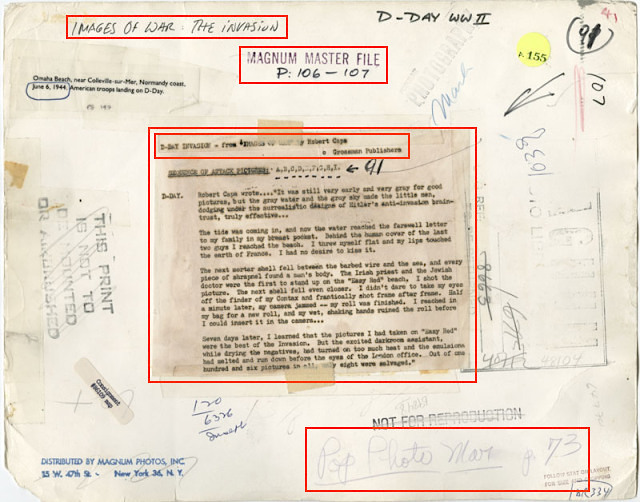
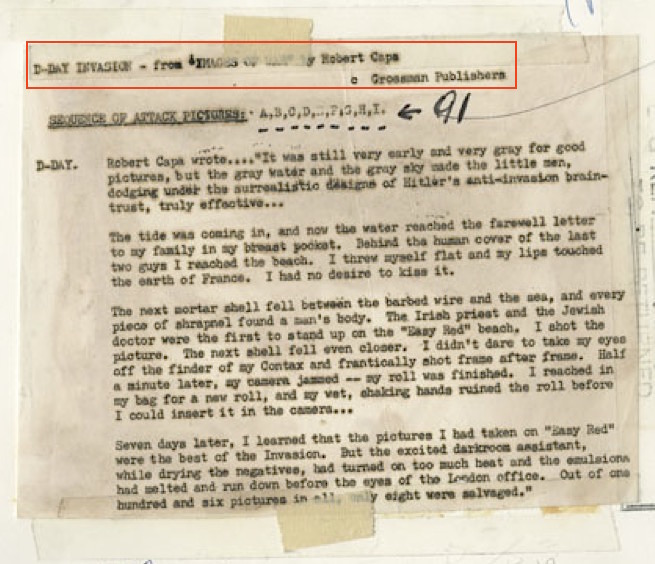
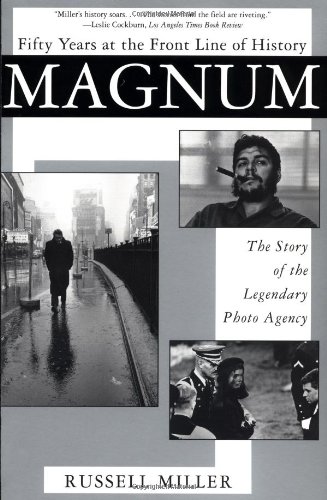


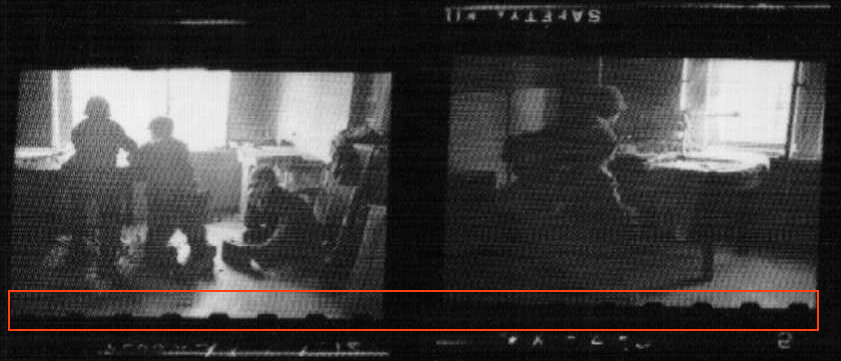
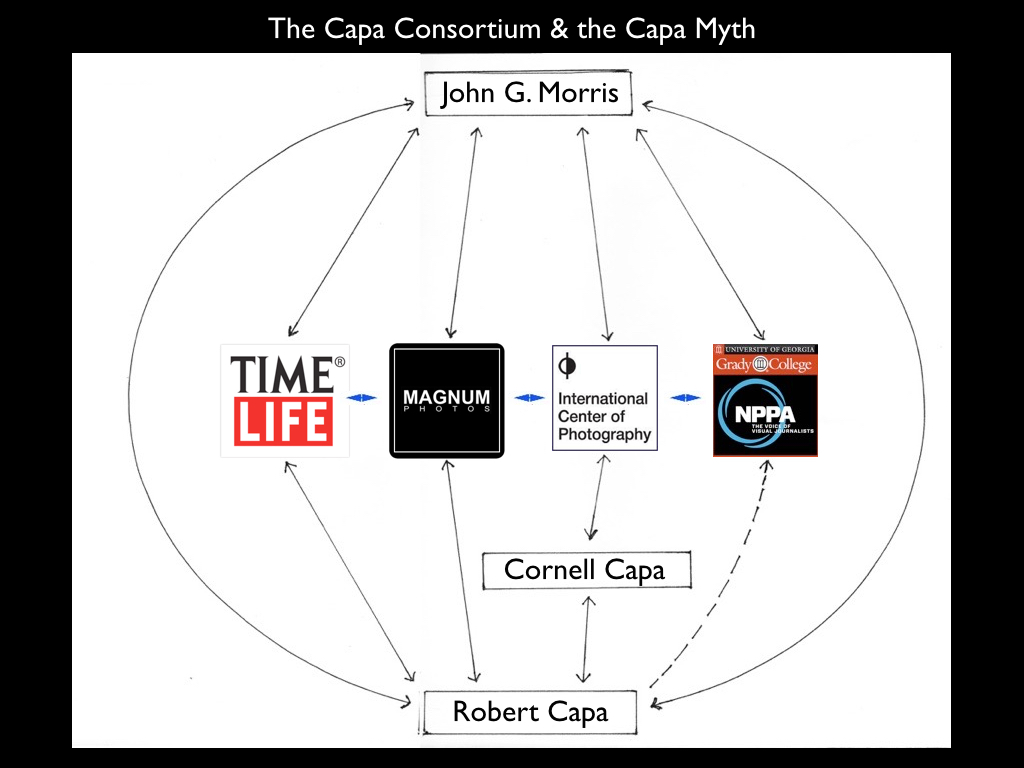
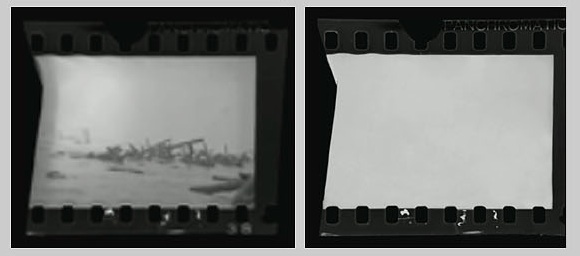
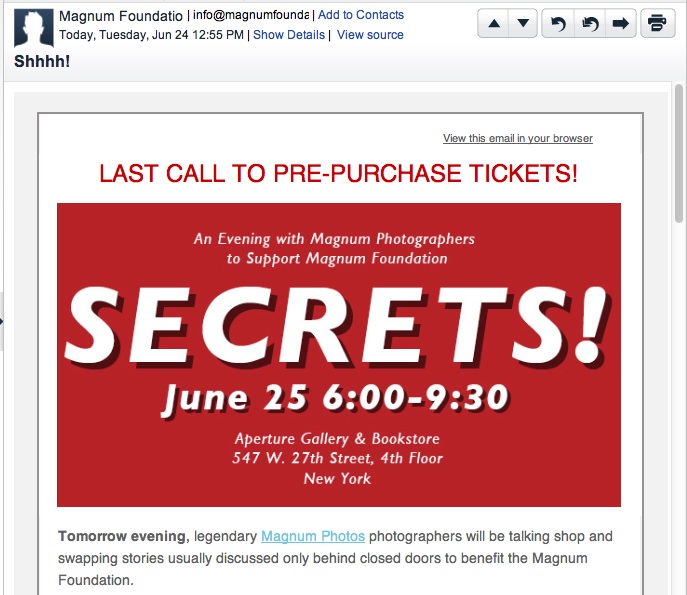




I would question how a film cabinet could even reach oven temperature heat? Tests should be done to see just how wet film is affected by heat. Get some film of that era, wet it and run a blow dryer on it until the film has been cooked.
I would think that overheating film would only buckle it as a film projector does sometimes when a frame got stuck in the projector.
If film is exposed to excessive heat, then it would just burn up the film. If Magnum is lying, it should just come clean…if anyone is left there that knows the truth. Everybody makes mistakes.
See my own tests in my own darkroom in this early post in the series.
Great writing Allan – thanks for this.
CAPA BROTHERS / GABOR SISTERS NAME CHANGING FOR SOCIAL PROMINENCE ALL SHOW BUSINESS
No need to shout …
I’m inclined to give Capa the benefit of the doubt regarding the name change. The Capa/Capra similarity never persuaded me as a motive; I don’t see “Capa” as promising “social prominence.” But hundreds of thousands of people from all over Europe with names dense with consonants and/or vowels, hard for western Europeans and English speakers to pronounce correctly and remember, simplified their names (or had them simplified for them arbitrarily by immigration officials — at Ellis Island, for example). They had all kinds of reasons, including leaving behind a checkered past, masking ethnicity, and making life easier by adopting something short, snappy, easy to spell and easy to remember.
Nobody gets on David Seymour’s case for leaving Dawid Szymin behind. Nor on the case of Bob Dylan for losing the Zimmerman. Why does this bother anyone about Capa?